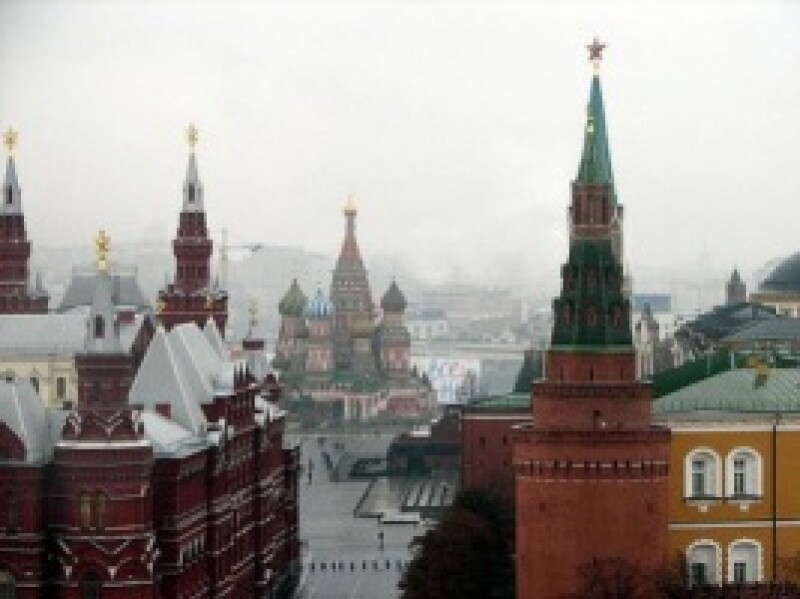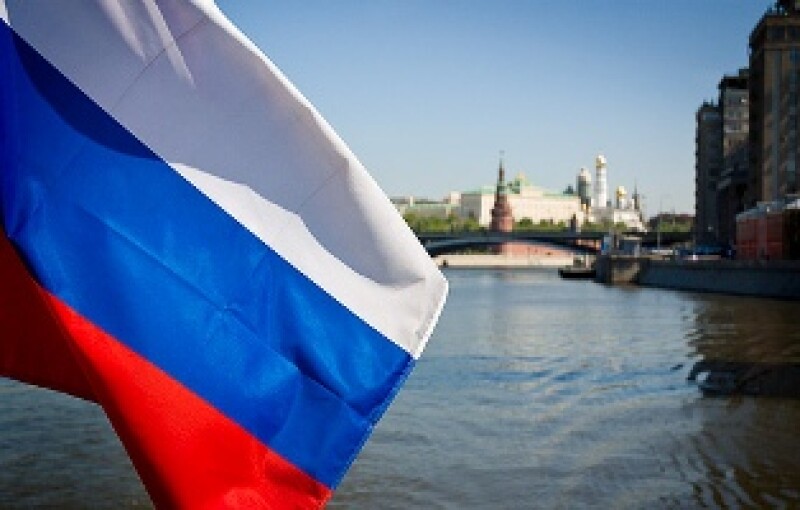
The goal of modifying the current Russian transfer pricing rules was a major component of the tax policy guidelines for 2008 – 2010 approved by the Russian government. It is highly likely that the modifications will make Russian transfer pricing rules more detailed and eliminate the current lack of clarity in the effective transfer pricing rules. In line with the goals set in the tax policy guidelines, the Russian Ministry of Finance recently prepared draft law stipulating amendments to the Russian Tax Code related to transfer pricing. According to the draft law, the articles in the Russian Tax Code stipulating the main framework of the current Russian transfer pricing rules (Article 20 related parties and article 40 Principles for Determination of Price of Goods, Work or Services for Tax Purposes) will be replaced by a new chapter in the Russian Tax Code on transfer pricing rules. The draft law prepared by the RF Ministry of Finance contains the following key changes:
expansion of the object of transactions subject to transfer pricing control (controlled transactions);
expansion to and modification of the list of controlled transactions;
expansion of formal criteria on treating parties as related;
replacement of the 20% permissible deviation in prices by the arm’s length range;
expansion of official sources of information to be used for transfer pricing purposes;
expansion of the list of transfer pricing methods and modification of the hierarchy on application of methods;
shift in the burden of proof from the tax authorities to taxpayers, introducing specific documentation requirements;
introduction of special penalties for violations of transfer pricing rules.
The aforementioned amendments to the Russian transfer pricing rules proposed by the draft law are described in more detail below.
Objects of controlled transactions
Under effective tax legislation the Russian tax authorities could only monitor the prices of transactions with goods, services or work. The effective Russian tax legislation does not clarify how to apply transfer pricing rules to transactions with property rights, intangible assets or financing transactions (i.e. provision of loans). As a result application of transfer pricing rules to such transactions tends to be subject to different and at times inconsistent interpretations by the tax authorities and courts in Russia.
The proposed amendments to the Russian transfer pricing legislation stipulate that transactions with property rights, information and intellectual property, as well as financing services, fall within the scope of transfer pricing control.
Controlled transactions
Similar to the current Russian transfer pricing rules, the draft law allows the Russian tax authorities to monitor the prices of transactions with related parties, as well as certain transactions with unrelated parties. However, the scope of control of unrelated party transactions has been narrowed, compared to current transfer pricing rules.
According to the proposed draft law, the prices of the following transactions may be subject to transfer pricing control:
transactions with related parties which include not only transactions performed directly between related parties, but also transaction chains where one or more independent intermediate companies are interposed between the related parties;
barter (commodity swap transactions), including those which involve partial payment in cash;
cross-border transactions which include exclusively:
– foreign trade transactions with services, work, property rights, information and intellectual property;
– foreign trade transactions with commodities traded on global exchanges;
– transactions concluded between Russian companies (Russian permanent establishments of foreign legal entities, Russian individuals) with legal entities and individuals registered (domiciled) in a jurisdiction with a preferential tax regime or a jurisdiction that does not require the disclosure of information on the fulfilment of financial operations.
The draft law proposes removing transactions in which prices established by a taxpayer deviate by more than 20% in either direction from the prices set by the taxpayer for identical (similar) goods, work, or services within a short period of time from the list of controlled transactions.
Related parties
The draft law proposes expanding the formal criteria used by the Russian tax authorities to treat parties as related. In particular, the following formal criteria for interdependency are stipulated by the draft law:
parties considered to be affiliated under existing Russian legislation;
companies in which one company holds a direct or indirect interest of more than 20% in another company;
sister companies, in which a third party has a direct or indirect interest of more than 20%;
all companies in a vertical chain in which each company owns more than a 50% interest in subsequent companies.
The draft law stipulates that options belonging to one company that confer participation rights in another company should be considered when calculating the share of interest, for the purposes of determining whether or not parties may be treated as related.
The draft law retains the provision of the current transfer pricing rules that parties may be declared interdependent by court. The draft law provides examples of instances where a court may treat parties as related for tax purposes (parties to a simple partnership agreement or parties to an agreement for fiduciary management of property).
According to the draft law, the parties may also be declared related parties at their own intent on other grounds and may thereby have to fulfil all requirements for (a) preparing documentation supporting prices in controlled transactions and (b) filing reports on controlled transactions.
Arm’s length prices

At present the Russian transfer pricing rules do not refer to an arm’s length range of prices. Instead, the Russian tax authorities can only assess additional taxes, if the prices set in controlled transactions deviate by more than 20% from one market price. Under the proposed changes to the Russian transfer pricing rules, the 20% permissible threshold will be abolished. As a result the tax authorities will have the right to assess additional taxes if the prices set in controlled transactions deviate from the arm’s length range of prices. The new approach brings legislation to certain extent more into line with international practice.
The arm’s length range would be determined under the specific formula. According to this approach, the arm's length range should be defined as follows:
it is necessary to define maximum and minimum ratios;
the minimum value of the arm's length range is defined as (minimum ratio x 3 + maximum ratio) / 4;
the maximum value of the arm's length range is defined as (maximum ratio x 3 + minimum ratio) / 4.
Under the draft law, the distribution of prices / profit level indicators within the arm’s length range is not considered. As a result, application of the inter-quartile range to a sample of market prices which are evenly distributed could narrow the arm’s length results. Distortions to the arm’s length results by a single price which is extraordinarily high (or low) could be potentially difficult to avoid, as the draft law does not stipulate methods to adjust arm’s length range of prices, with due account of the specifics of the tested transaction.
The draft law does not directly prescribe to which level of arm’s length range prices of controlled transactions could be adjusted by the Russian tax authorities, if such prices do not comply with the arm’s length level. According to the draft law, if the price of controlled transactions is too low, it may be adjusted by the tax authorities to the lower end of the arm’s length range and vice-versa: if the price of controlled transactions is too high, it may be adjusted by the tax authorities to the high end of the arm’s length range. The draft bill stipulates that the tax authorities may apply any other level within the arm’s length range which could be used for transfer pricing adjustments.
Official sources of information on market prices
Under the current Russian transfer pricing rules, the arm’s length price should be determined on the basis of official sources of information. However, the tax law does not explicitly clarify which sources of information may be considered “official.” The draft law provides an exhaustive list of official sources of information on market prices that may be used:
Exchange quotations;
Customs statistics databases published by Federal Customs Authorities;
Official sources of information of competent state and local authorities responsible for price regulation and statistics;
Information published and publicly available in the mass media and databases;
Appraisal reports;
Information from databases maintained by the tax authorities.
Transfer pricing methods
The draft law provides an extensive list of transfer pricing methods which may be used to determine arm’s length prices.
According to the draft law, the following methods may be applied:
· Traditional transaction methods:
– Comparable uncontrolled price method;
– Resale price method;
– Cost plus method.
According to the draft law, the resale price method and the cost plus method to certain extent resemble the transactional net margin method as stipulated by the OECD Transfer Pricing Guidelines for Multinational Enterprises and Tax Administrations issued by the Organisation for Economic Cooperation and Development (hereinafter – the OECD Guidelines). According to the draft law, the resale price method and cost plus method allow for application of both (a) net profit margins, as prescribed by the OECD Guidelines for the transactional net margin method and (b) gross profit margins as stipulated for the resale price method and the cost plus method prescribed by the OECD Guidelines.
– Price for sale of processed goods
Under this method, the market price of processed goods should be calculated based on the market prices for final and intermediate products, with due consideration of “usual costs” and “usual profitability” incurred at each processing stage.
· Profit-based methods:
– Comparable profitability method;
This method stipulates the calculation of the market price on the basis of the “usual” return on assets employed in a controlled transaction/usual return on capital. The mentioned usual profit level indicators would be determined on the basis of the inter-quartile range of the given profit level indicators generated by independent persons engaged in activities (operations) under comparable economic (commercial) circumstances.
– Profit-split method;
This method is used, if the other transfer pricing methods cannot be applied and there is a strong interconnection of the activities of the parties under a controlled transaction or the parties to controlled transactions possess unique intangible assets. Arm’s length prices under the profit-split method are determined on the basis of the usual profit level indicators of the parties to a controlled transaction (the arm’s length return on assets employed in a controlled transaction, return on capital determined similarly to the described above comparable profitability method), while the residual profits of a controlled transaction are to be split between parties applying the appropriate allocation key. According to the draft law, the residual profits of a controlled transaction may be split between the parties based on the amount of tangible and intangible assets deployed by the parties; functions performed and risks assumed by the parties and other essential factors influencing the price of the controlled transaction.
The draft law amends the hierarchy for applying transfer pricing methods prescribed by the current Russian transfer pricing rules: the comparable uncontrolled price method will be treated as the primary method, while the profit-split method will be treated as the method of last resort - no hierarchy is stipulated for the application of all other transfer pricing methods.
Documentation requirements
According to current Russian transfer pricing rules, prices established by counterparties in controlled transactions are deemed to correspond with the arm’s length level, unless otherwise proved. According to the draft law, the market price should be defined as a price within a range of arm’s length prices applied in transactions with similar/identical goods (work or services) between unrelated parties and under similar economic (commercial) conditions. Thus, the burden of proof that the price of controlled transactions is inconsistent with the arm’s length level is transferred from the tax authorities to the taxpayer.
In this regard, the taxpayers will be obliged to disclose information about controlled transactions, if amounts of such transaction exceed 1 million roubles, in attachments to tax returns (corporate profits tax returns; individual tax returns, tax returns prepared by taxpayers applying special tax regimes) submitted to the Russian tax authorities. Such information may include:
The list of controlled transactions in the reported period;
The list of foreign counterparties;
The prices of controlled transactions;
The methods applied to determine prices;
Sources of information on prices applied;
Amount of income/expenses received or incurred under controlled transactions.
In addition, taxpayers will have to submit to the tax authorities a specific list of supporting documentation in respect of the controlled transactions at the request of the tax authorities, including, in particular, information on the following:
taxpayer’s activity related to a controlled transaction and information on controlled transaction (terms of the controlled transaction, functions performed, risks undertaken and assets deployed by the taxpayer);
methods for determining the prices of a controlled transaction (description of transfer pricing methods, calculation of income received as a result of controlled transaction, calculation of economic benefit from the acquisition of information or intellectual property in controlled transaction);
other factors which influenced the level of prices applied (for instance, market strategy of a taxpayer; other economic and legal factors influencing prices).
According to the draft law, the aforementioned documentation / information should be provided to the tax authorities within 10 days of the receipt of a request.
Advanced pricing agreements
According to the draft law, taxpayers will be able to negotiate advanced pricing agreements with the Russian federal tax authorities. Such advanced pricing agreements could regulate the level of prices applied by taxpayers in controlled transactions and/or the methods for calculating such prices. A company will be able to conclude an advanced pricing agreement for up to three years and will be allowed to extend this period by a further two years. Amendments to the advanced pricing agreements can be introduced at the request of the taxpayer and/or upon the decision of respective federal tax authorities.
According to the draft law, taxpayers will not be able to negotiate advanced pricing agreements before 2010.
Special penalties for violations of transfer pricing rules
The draft law introduces the following special penalties for violations of transfer pricing rules:
failure to provide information on controlled transactions in due time or the provision of inauthentic data will lead to a penalty of RUB 5,000;
violation of the terms of an advanced pricing agreement will lead to a penalty of RUB 1,500,000.
Currently the draft law stipulating amendments to the Russian transfer pricing rules are at consultation stage with the RF government and business community. One could expect that the given draft law would undergo certain changes before it is submitted to the RF Parliament. In the meantime, it could be expected that the general tendencies for modification of the Russian transfer pricing rules would remain. In these circumstances, it is a good point in time for the Russian companies and the multinationals doing business in Russia to review the transactions which are and potentially will be subject to transfer pricing control and analyse if modifications should be made to the approach for pricing these transactions which is currently being applied.










